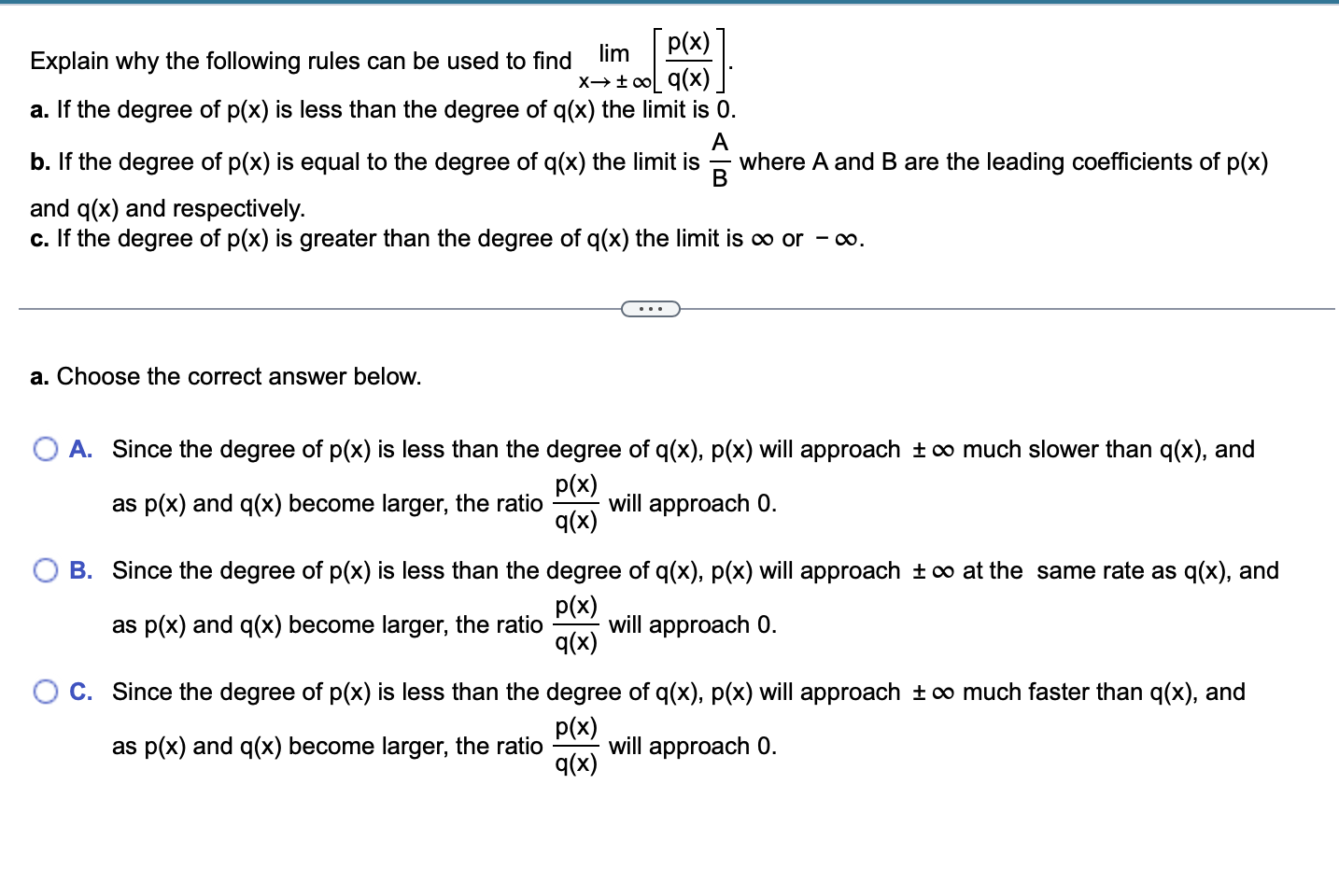Home /
Expert Answers /
Algebra /
explain-why-the-following-rules-can-be-used-to-find-lim-x-gt-infty-p-x-q-x-a-if-the-pa566
(Solved): Explain why the following rules can be used to find \lim_(x->+-\infty )[(p(x))/(q(x))]. a. If the ...
Explain why the following rules can be used to find \lim_(x->+-\infty )[(p(x))/(q(x))].
a. If the degree of p(x) is less than the degree of q(x) the limit is 0 .
b. If the degree of p(x) is equal to the degree of q(x) the limit is (A)/(B) where A and B are the leading coefficients of p(x)
and q(x) and respectively.
c. If the degree of p(x) is greater than the degree of q(x) the limit is \infty or -\infty .
a. Choose the correct answer below.
A. Since the degree of p(x) is less than the degree of q(x),p(x) will approach +-\infty much slower than q(x), and
as p(x) and q(x) become larger, the ratio (p(x))/(q(x)) will approach 0 .
B. Since the degree of p(x) is less than the degree of q(x),p(x) will approach +-\infty at the same rate as q(x), and
as p(x) and q(x) become larger, the ratio (p(x))/(q(x)) will approach 0 .
C. Since the degree of p(x) is less than the degree of q(x),p(x) will approach +-\infty much faster than q(x), and
as p(x) and q(x) become larger, the ratio (p(x))/(q(x)) will approach 0 .